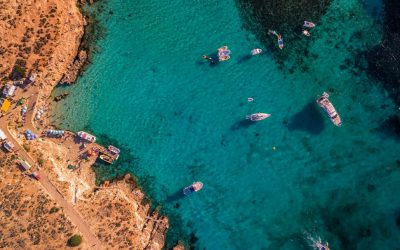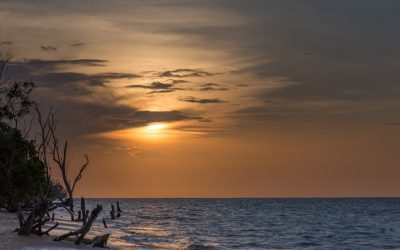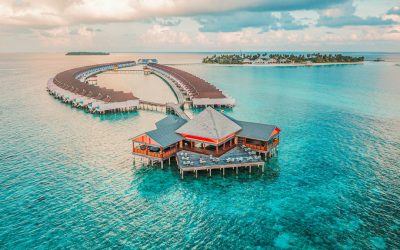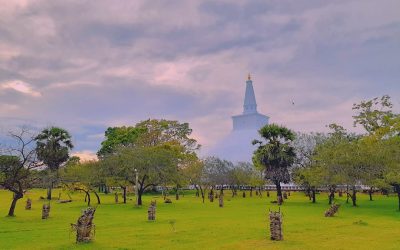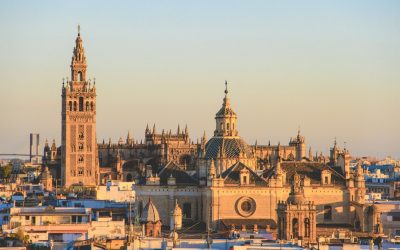World Geography
Geography is the study of the Earth’s landscapes, environments, and the relationships between people and their surroundings. It encompasses both the physical aspects of the Earth, such as its landforms, bodies of water, and climate, as well as the human aspects, including population distribution, cultures, and economies. World geography is a broad field that seeks to understand the complexities of our planet and how humans interact with it. By studying world geography, we can gain a deeper appreciation for the diversity of our planet and the interconnectedness of its various regions.
Geography is a multidisciplinary field that draws on elements of physical science, social science, and humanities. It involves the use of maps, spatial analysis, and geographic information systems (GIS) to understand the Earth’s surface and the processes that shape it. World geography also encompasses the study of human geography, which examines the ways in which people and their activities are distributed across the Earth. By understanding world geography, we can better appreciate the environmental, cultural, and economic challenges facing different regions of the world. This knowledge is crucial for addressing global issues such as climate change, resource management, and international development.
The Five Oceans and Seven Continents
The Earth’s surface is divided into five major oceans: the Pacific, Atlantic, Indian, Southern (or Antarctic), and Arctic Oceans. These vast bodies of water play a crucial role in regulating the Earth’s climate and supporting diverse marine ecosystems. The oceans also serve as important transportation routes and a source of food and other natural resources for human societies around the world.
In addition to the oceans, the Earth’s landmasses are divided into seven continents: Africa, Antarctica, Asia, Europe, North America, Australia (or Oceania), and South America. Each continent has its own unique physical and cultural characteristics, shaped by millions of years of geological processes and human history. From the deserts of Africa to the rainforests of South America, the continents offer a rich tapestry of landscapes and environments for exploration and study.
Major Mountain Ranges and Deserts
The Earth’s surface is also marked by major mountain ranges and deserts that have shaped the planet’s physical and cultural landscapes. The Himalayas, for example, are the highest mountain range in the world and are home to diverse ecosystems and cultures in countries such as India, Nepal, and Bhutan. The Andes in South America, the Rockies in North America, and the Alps in Europe are other prominent mountain ranges that have influenced human settlement patterns and economic activities.
Deserts cover about one-third of the Earth’s land surface and are characterized by low precipitation and extreme temperatures. The Sahara Desert in Africa is the largest hot desert in the world, while the Gobi Desert in Asia is one of the largest cold deserts. Deserts are not only home to unique flora and fauna but have also been important trade routes and cultural crossroads throughout history.
Climate Zones and Biomes
The Earth’s climate is influenced by a variety of factors, including latitude, altitude, ocean currents, and prevailing winds. As a result, the planet is divided into different climate zones, each with its own characteristic weather patterns and ecosystems. The equator, for example, experiences a tropical climate with high temperatures and heavy rainfall, while the polar regions have a cold and dry climate.
These climate zones give rise to different biomes, or large ecological areas characterized by distinct plant and animal communities. The tropical rainforest biome, found near the equator, is home to a diverse array of species and is vital for regulating the Earth’s climate. The grasslands biome, found in regions such as the African savannah and North American prairies, supports grazing animals and has been important for human agriculture throughout history.
Human Geography and Population Distribution
Human geography examines the ways in which people and their activities are distributed across the Earth’s surface. It encompasses topics such as population growth, migration patterns, urbanization, and cultural diversity. Understanding human geography is crucial for addressing global challenges such as poverty, inequality, and environmental degradation.
Population distribution is uneven across the world, with some regions experiencing rapid population growth while others are declining. The majority of the world’s population lives in Asia, particularly in countries such as China and India. Urban areas are also growing rapidly, with more than half of the world’s population now living in cities. This trend has significant implications for infrastructure development, resource management, and social inequality.
Historical and Cultural Geography
Historical geography examines how human activities have shaped the Earth’s landscapes over time. It explores topics such as colonialism, trade routes, and the rise and fall of empires. Cultural geography focuses on how human cultures have developed in different regions of the world and how they interact with their environments.
The Silk Road, for example, was an ancient trade route that connected China with Europe and facilitated the exchange of goods, ideas, and technologies across Eurasia. This historical trade route had a profound impact on the development of cultures and economies along its path. Similarly, cultural geographers study how different societies have adapted to their environments through practices such as agriculture, architecture, and religious beliefs.
The Importance of Geographic Knowledge
Geographic knowledge is crucial for addressing global challenges such as climate change, resource management, and international development. By understanding world geography, we can better appreciate the environmental, cultural, and economic challenges facing different regions of the world. This knowledge is crucial for addressing global issues such as climate change, resource management, and international development.
Geographic knowledge also helps us to understand our interconnectedness with other regions of the world. By studying world geography, we can gain a deeper appreciation for the diversity of our planet and the interconnectedness of its various regions. This understanding can foster a sense of global citizenship and empathy for people from different cultures and backgrounds.
In conclusion, world geography is a complex and multifaceted field that encompasses both physical and human aspects of the Earth’s landscapes. By studying world geography, we can gain a deeper appreciation for the diversity of our planet and the interconnectedness of its various regions. This knowledge is crucial for addressing global challenges such as climate change, resource management, and international development. It also helps us to understand our interconnectedness with other regions of the world and fosters a sense of global citizenship.
FAQs
What is world geography?
World geography is the study of the Earth’s landscapes, environments, and the relationships between people and their environments. It encompasses the physical features of the Earth, as well as the human activity that takes place on it.
Why is world geography important?
World geography is important because it helps us understand the world around us. It provides insights into the physical and human processes that shape our planet, and helps us make informed decisions about how to interact with our environment.
What are the main branches of world geography?
The main branches of world geography include physical geography, which focuses on the Earth’s natural features and processes, and human geography, which examines the relationships between people and their environments.
How does world geography impact our daily lives?
World geography impacts our daily lives in numerous ways, from influencing the weather and climate we experience, to shaping the availability of natural resources and influencing the distribution of populations and cultures around the world.
What are some key concepts in world geography?
Key concepts in world geography include location, place, human-environment interaction, movement, and region. These concepts help geographers understand and interpret the world around them.
Discovering the Hidden Gems of Malta: A Journey Through the Mediterranean’s Best-Kept Secret
Malta, a small archipelago in the Mediterranean Sea, is often considered a hidden gem among travel destinations. With its rich history, stunning natural beauty, delicious cuisine, and warm hospitality, Malta has something to offer every type of traveler. Despite its small size, Malta is packed with cultural and historical sites, beautiful beaches, charming countryside, and a vibrant local scene. Whether you’re interested in exploring ancient ruins, lounging on pristine beaches, or indulging in local cuisine and wine, Malta has it all. Summary Malta is a hidden gem in the Mediterranean with rich culture, stunning natural beauty, and fascinating history. The local cuisine and wine in Malta are a must-try for any foodie. Off the beaten path, Malta has many hidden gems waiting to be discovered. Malta’s archaeological sites and museums offer a glimpse into the island’s fascinating past. From water sports to hiking, there are plenty of activities to enjoy in Malta. Exploring the Rich Culture and History of Malta Malta’s culture and history have been shaped by various civilizations throughout the centuries. From the Phoenicians and Romans to the Arabs and Knights of St. John, each civilization has left its mark on the islands. One must-visit historical site is the ancient city of Mdina, also known as the Silent City. This fortified city dates back to the 8th century BC and is filled with narrow streets, medieval architecture, and stunning views of the surrounding countryside. Another must-visit landmark is the UNESCO World Heritage site of Valletta. This capital city is a treasure trove of historical sites, including St. John’s Co-Cathedral, which houses Caravaggio’s famous painting “The Beheading of...
Discovering Sweden: A Journey Through the Land of the Midnight Sun
Sweden, located in Northern Europe, is a land of contrasts. From its stunning natural landscapes to its vibrant cities, Sweden offers a unique blend of beauty and modernity. The country is known for its vast forests, crystal-clear lakes, and picturesque archipelagos. Its geography is diverse, with mountains in the north and rolling plains in the south. The climate varies from mild summers to cold winters, making it an ideal destination for both outdoor enthusiasts and city dwellers. The Swedish culture and lifestyle are deeply rooted in nature and sustainability. Swedes have a strong connection to the environment and prioritize eco-friendly practices. They value simplicity, equality, and work-life balance. The Swedish lifestyle is often described as “lagom,” which means finding the perfect balance in all aspects of life. This philosophy is reflected in their approach to work, relationships, and leisure activities. Summary Sweden is a land of contrasts, with a rich history and culture, natural wonders, delicious cuisine, and hidden gems. Exploring the natural wonders of Sweden is a must-do, from the Northern Lights to the Swedish archipelago and the midnight sun. The Swedish cuisine is a delicious journey, with traditional dishes like meatballs, herring, and cinnamon buns. Stockholm is the capital city and has many hidden gems to discover, from trendy neighborhoods to historic landmarks. The Sami people are the indigenous culture of Sweden, and learning about their traditions and way of life is a fascinating experience. The Rich History and Culture of Sweden Sweden has a rich history that has shaped its culture and identity. The country was once a powerful empire that controlled vast territories in Northern...
Exploring the Rich Cultural Heritage of Mali: A Journey Through the Heart of West Africa
Mali, located in West Africa, is a landlocked country known for its rich cultural heritage and diversity. It is the eighth-largest country in Africa, covering an area of approximately 1.24 million square kilometers. Mali has a population of over 19 million people, with Bamako being the capital and largest city. One of the most significant aspects of Mali is its cultural heritage. The country is home to various ethnic groups, each with its own unique traditions, languages, and customs. This diversity is reflected in Mali’s art, music, dance, clothing, cuisine, and festivals. Mali’s cultural heritage is not only important for its people but also for the world as it provides a glimpse into the rich history and traditions of West Africa. Summary Mali is a jewel of West Africa, with a rich cultural heritage and natural wonders. Mali’s ancient history includes the powerful empires of Ghana and Mali. Mali’s art and architecture blend traditional and modern styles. Music and dance are integral to Mali’s culture, with rhythms unique to the Sahel region. Mali’s traditional clothing and textiles showcase a vibrant tapestry of colour and design. Mali’s Ancient History: From the Empire of Ghana to the Mali Empire Mali has a fascinating ancient history that dates back to the time of the Empire of Ghana. The Empire of Ghana was one of the most powerful and prosperous states in West Africa from the 9th to the 13th century. It was known for its wealth in gold and salt trade and its strong centralized government. After the decline of the Empire of Ghana, the Mali Empire emerged as a dominant force...
Exploring the Hidden Gems of Suriname: A Journey Through South America’s Best-Kept Secret
Suriname, located on the northeastern coast of South America, is often referred to as the continent’s hidden gem. This small country, bordered by Guyana to the west, French Guiana to the east, Brazil to the south, and the Atlantic Ocean to the north, offers a unique travel experience that is unlike any other in the region. Suriname has a rich and diverse history that dates back centuries. It was originally inhabited by indigenous peoples, but was later colonized by the Dutch in the 17th century. The country gained independence in 1975, but still retains strong ties to its colonial past. What sets Suriname apart from other South American destinations is its cultural diversity. The population of Suriname is made up of various ethnic groups, including Creoles, Maroons, Hindustanis, Javanese, Chinese, and indigenous peoples. This melting pot of cultures has resulted in a vibrant and unique society that is reflected in its music, dance, art, and cuisine. Summary Suriname is a hidden gem in South America with rich cultural heritage and unspoiled natural beauty. The country’s colonial past is fascinating and worth exploring, with many historical sites to visit. Suriname’s cuisine is a unique fusion of cultures, offering a delicious and diverse culinary experience. The vibrant nightlife of Paramaribo is a must-see, with plenty of bars, clubs, and live music venues. Journeying through Suriname’s remote indigenous communities and ecotourism hotspots is a great way to experience the country’s natural beauty and cultural diversity. Discovering the Rich Cultural Heritage of Suriname One of the highlights of visiting Suriname is experiencing its rich cultural heritage. The country’s population is incredibly diverse, with...
Discovering the Enchanting Charms of the Maldives: A British Perspective
The Maldives, a tropical paradise located in the Indian Ocean, has long been a popular travel destination for people from all over the world. With its stunning natural beauty, crystal-clear waters, and pristine beaches, it’s no wonder that the Maldives is often referred to as a slice of heaven on earth. For British travellers, the Maldives offers a perfect escape from the hustle and bustle of everyday life, with its tranquil atmosphere and breathtaking landscapes. There are several reasons why British travellers should consider visiting the Maldives. Firstly, it offers a unique opportunity to experience a different culture and way of life. The Maldivian culture is a blend of South Asian, African, and Arab influences, resulting in a rich and diverse heritage. From traditional music and dance to unique art forms and cuisine, there is so much to explore and discover in the Maldives. Secondly, the Maldives is known for its luxurious accommodation options. From overwater villas with private pools to beachfront resorts with stunning views, there is something for every type of traveller. Whether you’re looking for a romantic getaway or a family-friendly vacation, the Maldives has it all. Lastly, the Maldives offers a wide range of activities and excursions for adventure enthusiasts. From snorkelling and diving in the vibrant coral reefs to sunset cruises and seaplane tours, there is no shortage of things to do in this tropical paradise. Summary The Maldives is a must-visit destination for Brits due to its stunning natural beauty and unique culture. Visitors can enjoy crystal-clear waters and pristine beaches, as well as a blend of South Asian, African and Arab influences....
Exploring the Rich Culture and History of Sudan: A Journey Through the Heart of Africa
Sudan, located in northeastern Africa, is a country that often goes unnoticed as a travel destination. However, this hidden gem is worth exploring for its rich history, vibrant culture, and stunning natural beauty. From ancient pyramids to bustling markets, Sudan offers a unique and authentic travel experience. In this article, we will delve into the various reasons why Sudan is worth visiting and explore some of its most captivating attractions. Summary Sudan is a fascinating destination in Africa with a rich history and culture. The ancient pyramids of Sudan are a hidden treasure waiting to be discovered. A journey through Nubian culture is a journey through time. Khartoum’s vibrant markets offer a shopper’s paradise. Sudanese cuisine is a delicious blend of flavours and spices. The Ancient Pyramids of Sudan: A Hidden Treasure When it comes to pyramids, most people immediately think of Egypt. However, Sudan is home to its own collection of ancient pyramids that are equally impressive and historically significant. The pyramids in Sudan were built by the Nubian civilization, which thrived along the Nile River thousands of years ago. Compared to the more famous pyramids in Egypt, the pyramids in Sudan are less crowded and offer a more intimate experience. The Nubian pyramids are smaller in size but equally fascinating in their design and construction. They are also better preserved than their Egyptian counterparts, allowing visitors to truly appreciate their beauty. When visiting the pyramids in Sudan, it is important to be prepared for the desert climate. Make sure to bring plenty of water, sunscreen, and a hat to protect yourself from the sun. It is also...
Discovering the Hidden Gems of Malaysia: A Journey Through Culture, Cuisine and Natural Beauty
Malaysia is a country known for its vibrant culture, stunning landscapes, and delicious cuisine. While popular tourist destinations like Kuala Lumpur and Penang attract millions of visitors each year, there are many hidden gems in Malaysia that often go unnoticed. These hidden gems offer a unique and authentic experience for travelers who are willing to venture off the beaten path. Hidden gems can be defined as lesser-known destinations or attractions that are not typically frequented by tourists. They are often tucked away in remote areas or overshadowed by more popular tourist spots. These hidden gems provide an opportunity for travelers to discover the true essence of Malaysia, away from the crowds and commercialization. Summary Malaysia has many hidden gems waiting to be discovered by tourists. The country’s diverse culture is reflected in its architecture, art, and traditions. Malaysia’s unique cuisine is a blend of Malay, Chinese, and Indian influences. The country’s natural beauty includes rainforests, beaches, and wildlife. Malaysia’s historical landmarks and festivals offer a glimpse into its rich history and traditions. Exploring Malaysia’s Diverse Culture One of the most fascinating aspects of Malaysia is its multicultural society. The country is home to various ethnic groups, including Malays, Chinese, Indians, and indigenous tribes. Each group has its own traditions, customs, and festivals, making Malaysia a melting pot of cultures. For those interested in immersing themselves in Malaysia’s diverse culture, there are several cultural experiences to consider. One such experience is visiting the Batu Caves in Kuala Lumpur during the Thaipusam festival. This Hindu festival attracts thousands of devotees who carry kavadis (ornate structures) as a form of penance. Another...
Discover the Hidden Gems of Sri Lanka: A Journey Through the Pearl of the Indian Ocean
Sri Lanka, often referred to as the “Pearl of the Indian Ocean,” is a small island nation located in South Asia. It is known for its stunning natural beauty, rich history, and vibrant culture. The country is surrounded by the Indian Ocean, which gives it a diverse range of landscapes, from pristine beaches to lush tea plantations and misty mountains. With a history dating back over 2,500 years, Sri Lanka has a wealth of ancient ruins and temples that showcase its cultural heritage. The country has been influenced by various civilizations throughout its history, including the Sinhalese, Tamils, Portuguese, Dutch, and British. This diverse mix of cultures has shaped Sri Lanka into a unique destination with a rich tapestry of traditions, customs, and cuisines. Sri Lanka is a must-visit destination for travelers seeking a blend of natural beauty, cultural heritage, and warm hospitality. Whether you are exploring ancient cities and temples, hiking through tea plantations, spotting wildlife in national parks, relaxing on pristine beaches, or indulging in delicious cuisine, Sri Lanka offers something for everyone. Summary Sri Lanka is known as the Pearl of the Indian Ocean. The Cultural Triangle offers a chance to explore ancient cities and temples. The Hill Country is home to tea plantations and scenic landscapes. Wildlife sanctuaries provide an opportunity to experience Sri Lanka’s biodiversity. Sri Lanka’s beaches offer pristine coastlines and coral reefs for relaxation. The Cultural Triangle: Exploring Sri Lanka’s Ancient Cities and Temples The Cultural Triangle is a region in Sri Lanka that encompasses the ancient cities of Anuradhapura, Polonnaruwa, and Sigiriya. These cities are UNESCO World Heritage Sites and offer...
Exploring the Hidden Gems of Malawi: A Journey Through the Warm Heart of Africa
Malawi, also known as the “Warm Heart of Africa,” is a landlocked country located in southeastern Africa. It is bordered by Tanzania to the northeast, Mozambique to the east, south, and west, and Zambia to the northwest. With a population of over 18 million people, Malawi is known for its friendly and welcoming people. The country’s nickname, the “Warm Heart of Africa,” reflects the hospitality and kindness of its people. Malawi is a great travel destination for many reasons. It offers a unique blend of natural beauty, rich cultural heritage, and exciting wildlife experiences. From the unspoiled beauty of Lake Malawi to the charming towns and villages, there is something for everyone to enjoy in this diverse country. Summary Malawi is known as the Warm Heart of Africa, with friendly locals and a welcoming atmosphere. Lake Malawi is a stunning natural wonder, with crystal-clear waters and unspoiled beaches. Malawi has a rich cultural heritage, with traditional dances, music, and crafts to discover. Wildlife safaris in Malawi offer the chance to see elephants, lions, and other incredible animals up close. Malawi’s towns and villages are full of charm and character, with colourful markets and friendly locals. The Unspoiled Beauty of Lake Malawi One of the highlights of visiting Malawi is exploring the stunning Lake Malawi. Known as the “Lake of Stars,” Lake Malawi is the third-largest lake in Africa and covers about one-fifth of the country’s total area. It is also one of the deepest lakes in the world. Lake Malawi is not only beautiful but also significant in terms of biodiversity. It is home to over 1,000 species of...
Discover the Charms of Spain: A Journey Through Its Vibrant Culture and Stunning Landscapes
Spain, located in southwestern Europe, is a country known for its diverse landscapes, rich history, and vibrant culture. It is bordered by Portugal to the west, France to the northeast, and the Mediterranean Sea to the south and east. The country is divided into 17 autonomous regions, each with its own distinct culture and traditions. Spain has a long and complex history that dates back thousands of years. It was once home to various ancient civilizations, including the Celts, Iberians, and Romans. In the 8th century, the Moors from North Africa invaded Spain and established the Islamic Caliphate of Cordoba. This period of Moorish rule had a significant impact on Spanish culture and architecture. Spain played a crucial role in European and world history. It was a dominant global power during the 16th and 17th centuries, with vast territories in the Americas, Asia, and Africa. The Spanish Empire brought immense wealth to the country through trade and exploration. However, Spain also experienced periods of decline and political instability in the following centuries. Summary Spain is a diverse country with a rich history and vibrant culture. The artistic heritage of Spain is vast, from Gaudi to Picasso. Spain boasts natural wonders such as mountains, beaches, and national parks. The Spanish way of life includes siestas, tapas, and flamenco. Iconic Spanish cities include Madrid, Barcelona, Seville, and Granada. Exploring the Vibrant Culture of Spain: Food, Music, and Festivals Spanish cuisine is renowned worldwide for its bold flavors and diverse ingredients. Tapas, small plates of food meant to be shared, are a staple of Spanish dining. They can range from simple dishes...
Exploring the Natural Wonders of Madagascar: A Journey Through the Island’s Biodiverse Landscapes
Madagascar, the fourth largest island in the world, is a treasure trove of biodiversity and ecological wonders. Located off the eastern coast of Africa, this unique island is home to a wide array of plant and animal species that cannot be found anywhere else on Earth. From lush rainforests to vibrant coral reefs, Madagascar offers a glimpse into a world teeming with life and natural beauty. In this article, we will explore the diverse flora and fauna of Madagascar, the threats facing its ecosystems, and the importance of conservation efforts to protect its ecological riches. Summary Madagascar is home to a unique and diverse ecosystem with a rich variety of flora and fauna. The rainforests, baobab trees, coral reefs, spiny forests, and waterways of Madagascar offer a wealth of ecological treasures to explore. The lemurs of Madagascar are a fascinating and important part of the island’s biodiversity. National parks play a crucial role in preserving Madagascar’s natural treasures for future generations. The people of Madagascar have a deep connection to their natural environment and strive to live in harmony with nature. The Flora and Fauna of Madagascar: A Unique and Diverse Ecosystem Madagascar’s isolation from mainland Africa has allowed for the evolution of unique species that are found nowhere else on the planet. The island is home to an estimated 12,000 plant species, 80% of which are endemic. These include the iconic baobab trees, which can live for thousands of years and store large amounts of water in their trunks to survive in arid conditions. Other notable plant species include the carnivorous pitcher plants and the delicate orchids that...
Exploring the Rich Culture and History of South Sudan: A Journey Through the Heart of Africa
South Sudan, located in East-Central Africa, is a country known for its rich cultural heritage and diverse population. It gained independence from Sudan in 2011, making it the youngest country in the world. With over 60 different ethnic groups, each with its own unique traditions and customs, South Sudan is a melting pot of cultures. The cultural diversity in South Sudan is of great importance as it contributes to the country’s identity and national unity. It allows for the celebration and preservation of various traditions, languages, music, dance, art, and cuisine. The cultural heritage of South Sudan is a source of pride for its people and plays a vital role in shaping their collective identity. Summary South Sudan is a diverse country with a rich culture that celebrates its traditions through music, dance, art, craft, cuisine, festivals, and family and community values. The history of South Sudan dates back to ancient kingdoms and has been marked by colonization, civil wars, and independence struggles. Traditional music and dance are an integral part of South Sudanese culture, reflecting the country’s ethnic diversity and social customs. The art and craft of South Sudan showcase the country’s heritage, with unique styles and techniques that vary across regions and communities. South Sudanese cuisine is a fusion of flavours and influences from neighbouring countries, with staple foods like sorghum, maize, and beans, and dishes like asida, bamia, and ful medames. The History of South Sudan: From Ancient Kingdoms to Independence The history of South Sudan dates back thousands of years, with evidence of ancient kingdoms and civilizations that once thrived in the region. The Kingdom...
